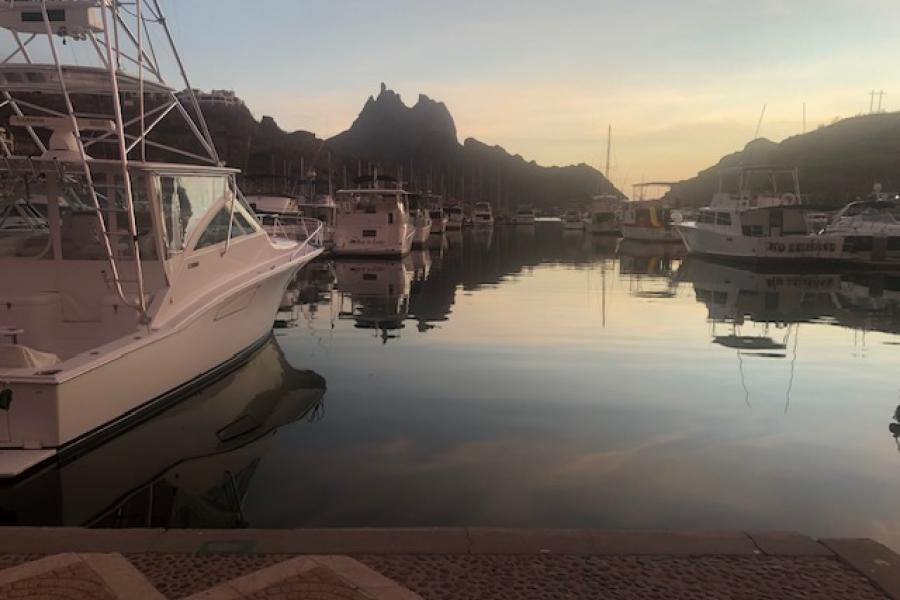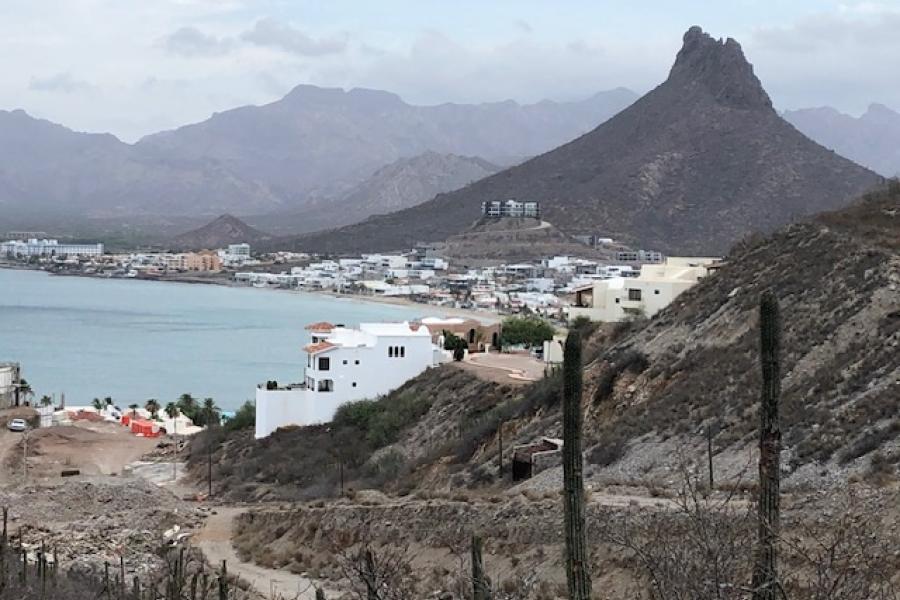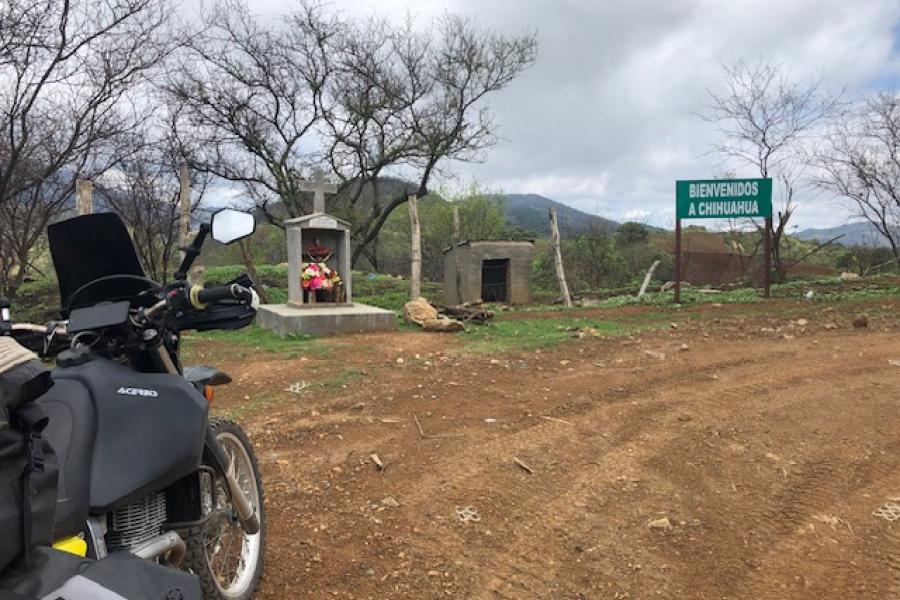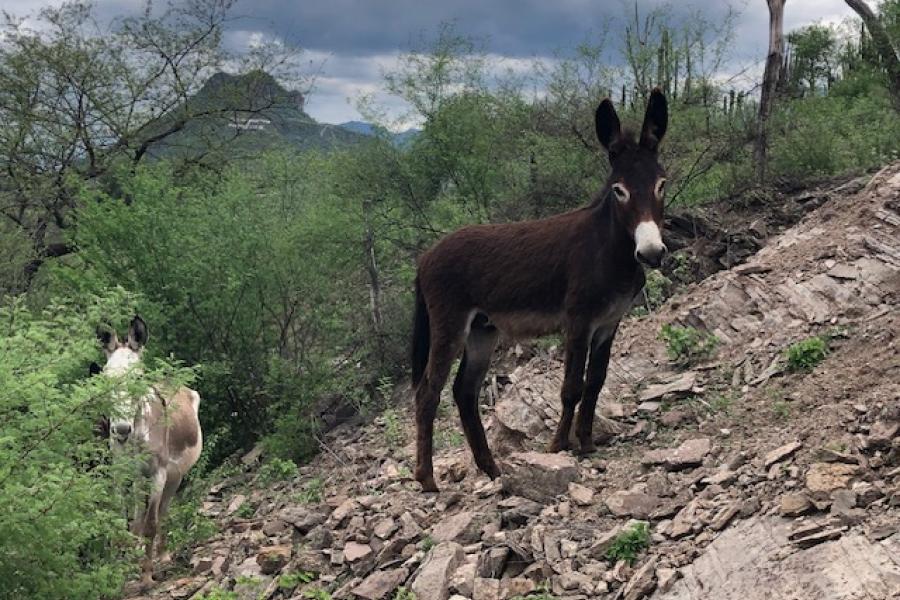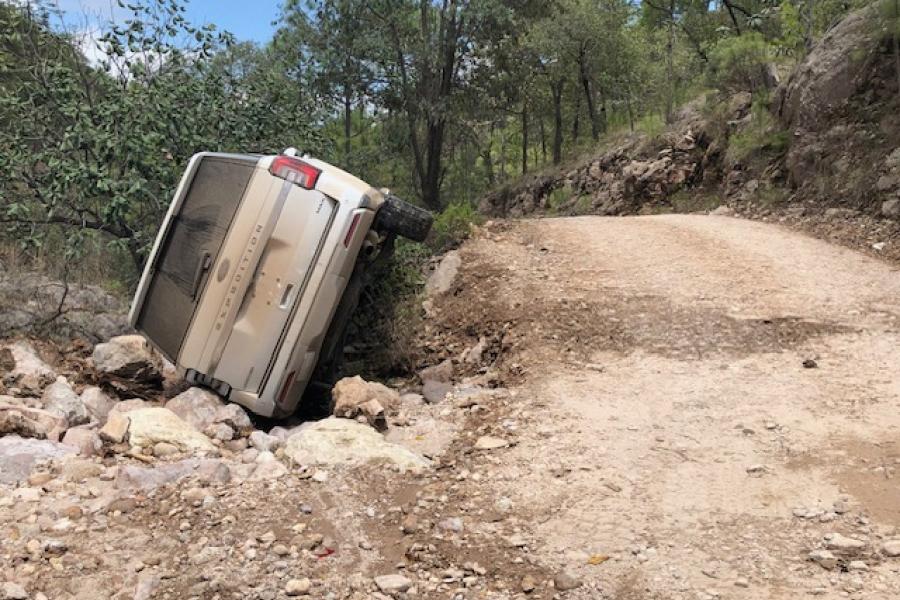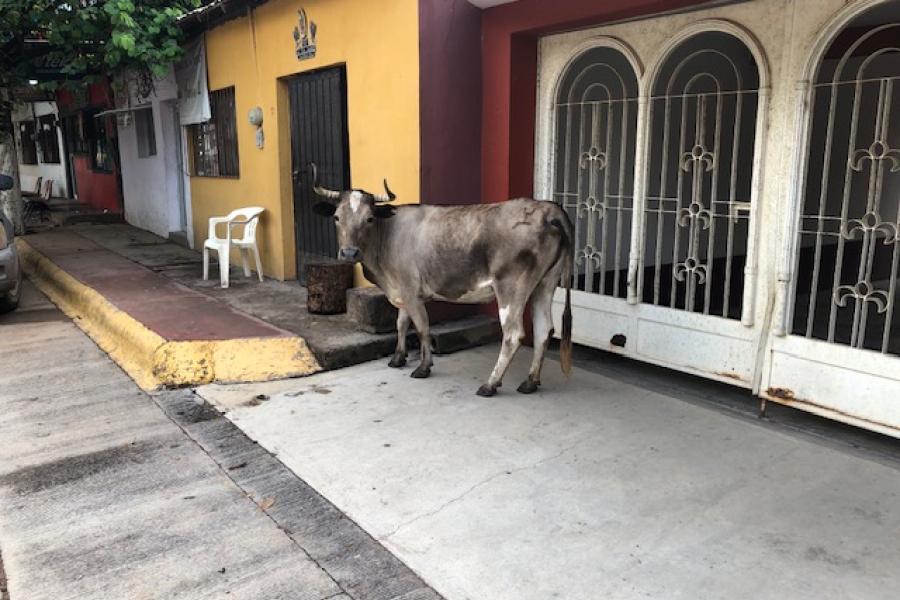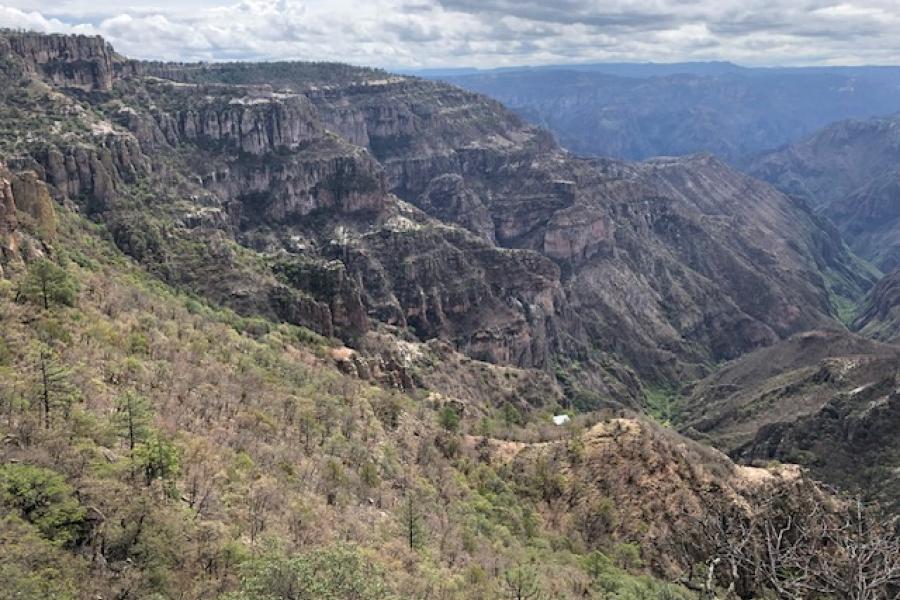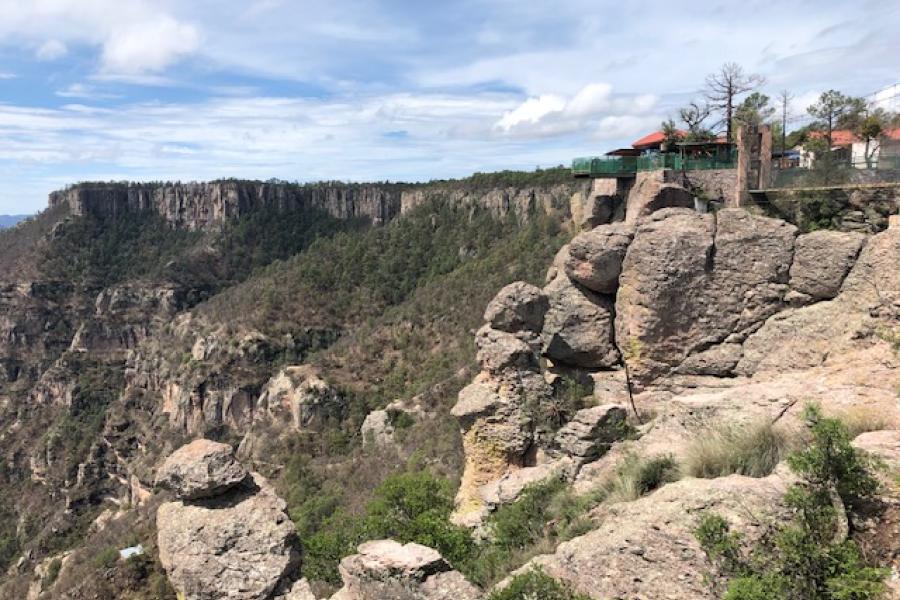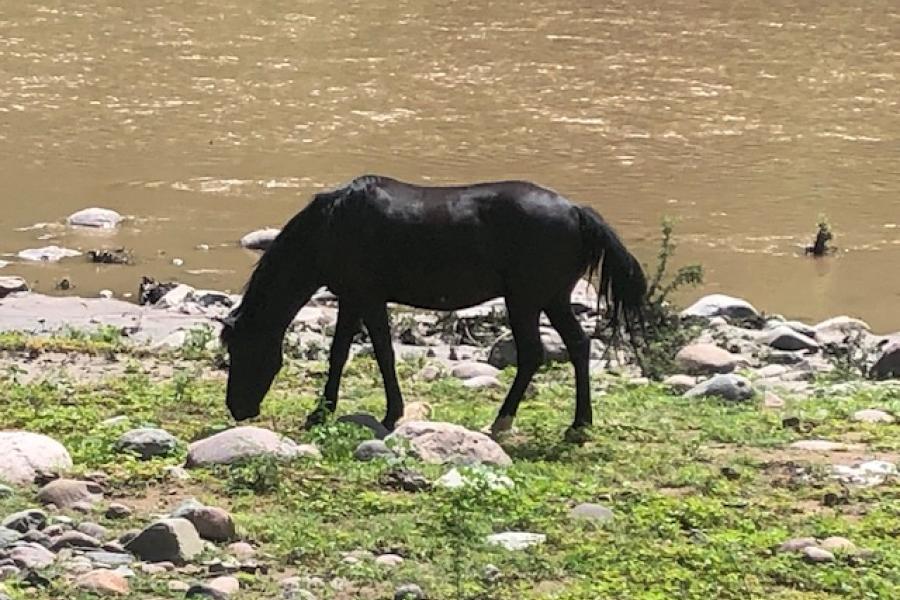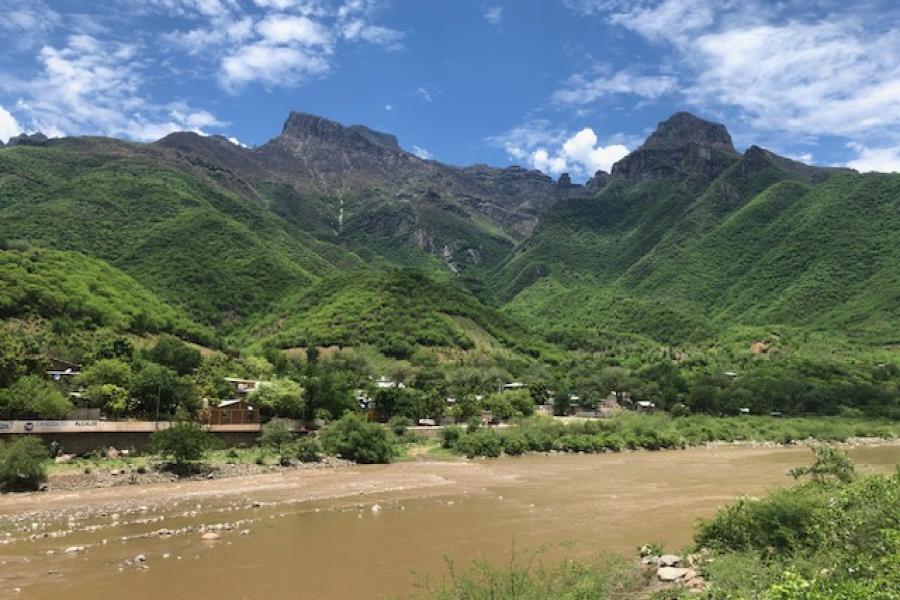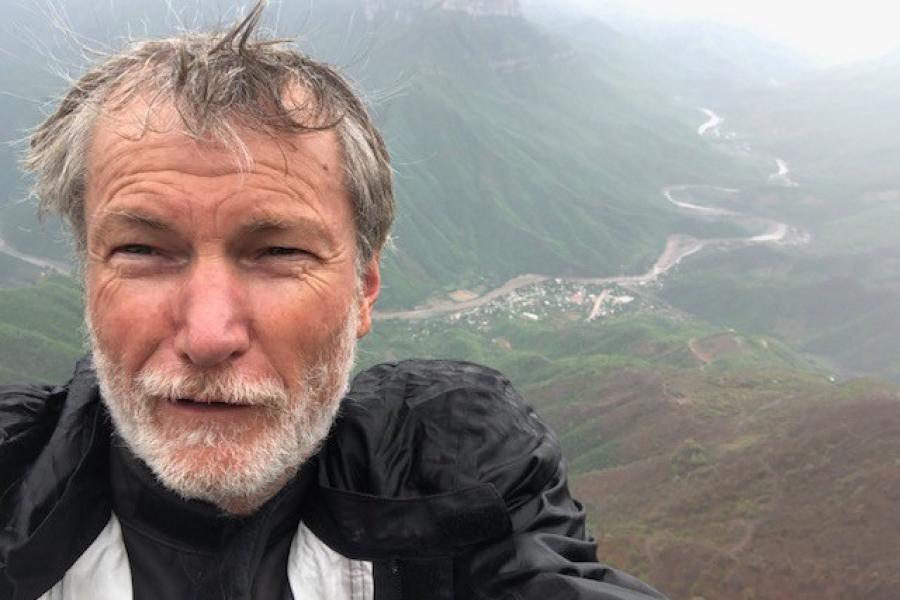Mexico: border → coast → Copper Canyon
Country
¡Hola familia y amigos!
What a week. The trick with writing this blog is squashing it all down. It feels like each day has a week's worth of new experiences.
Before I start describing the Mexico I've seen so far, please understand where I'm coming from: born into a middle class Australian family in the 60s has given great opportunities in life. I aim to be objective and avoid being condescending; forgive me if I faĺl short.
Since this is a road trip, let's talk cars and bikes first. i.e life.
There are plenty of reminders to be careful - dotted along the roadside are shrines for the perished. They all have a religious theme, varying from simple:
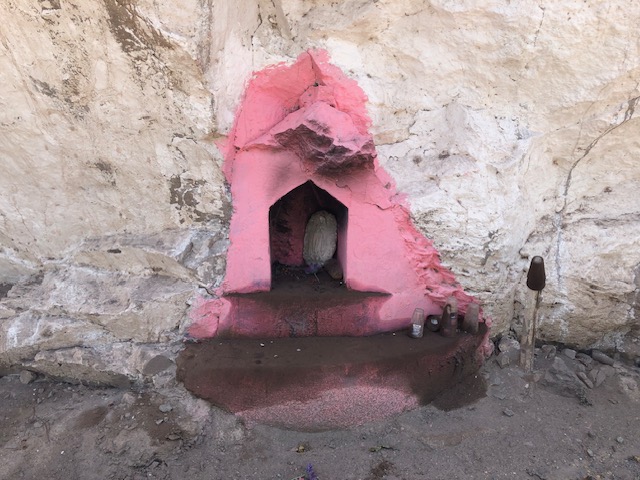
to elaborate:
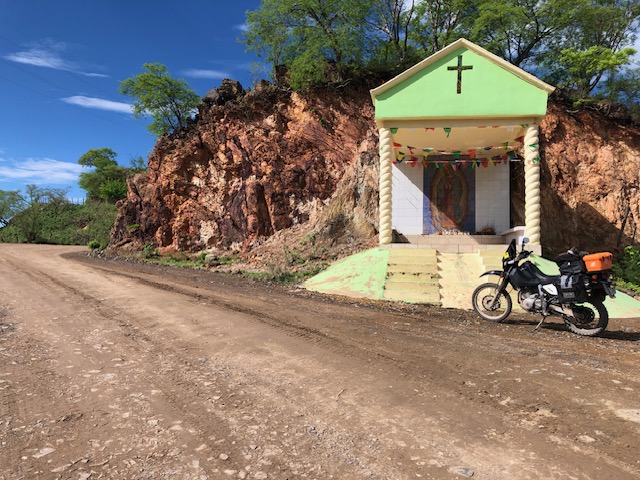
On the first day, it felt like many drivers were aiming to have their own shrine. Heading up a mountain pass was a string of semis. They kept to the far right with hazards flashing for others to pass. Cool. I went around. Down the other side I was reluctant to pass cars given the lack of vision around a curve with double lines. It was startling when one of those semis came past us all.
It can go wrong of course. At a curved narrow cutting were blokes waving orange flags. A truck had rolled over, leaving a single lane for both directions.
Another truck rollover on a flat, straight freeway had a gaggle of cars, some with flashing lights. A hearse sat discretely opposite.
For sure, driving is less formal here. I don't mind a liberal interpretation of road rules, where watching out for everyone else trumps keeping below an arbitrary speed or keeping strictly to a given lane. It's been easy to get into this new rhythm.
Vehicle condition varies greatly, from big shiny new utes as per the USA, to functional but damaged older cars. Outerlying places had many 70s / 80s F series / Broncos, reminding me of dad's cars when I was a kid (dunno if any had a 460 in 'em, dad). Here's my favourite well used car:
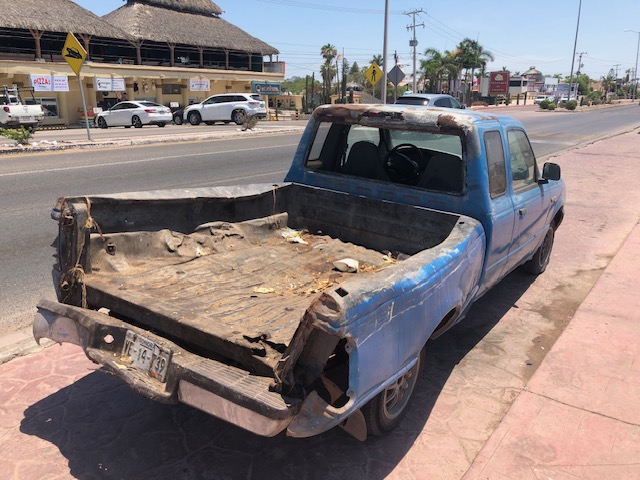
Bikes are 125 to 250cc four strokes, most the locally made "Italika", a bike based on Hyosung. They're everywhere. Adults and kids alike charge around on them, with one or two pillions and a often just a baseball cap (ubiquitous on Mexican males) to protect.
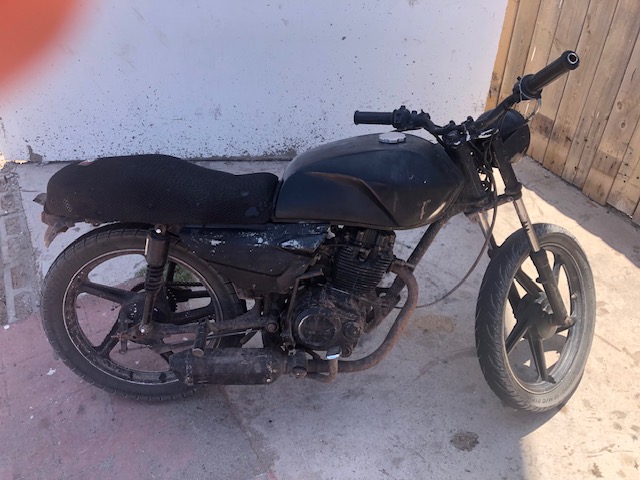
The first night was in Hermosillo, a city of about one million. I got in late, a bit flustered with heat and navigation. The closest eatery had Parisian themed decor but served pizza and pasta. In Mexico.
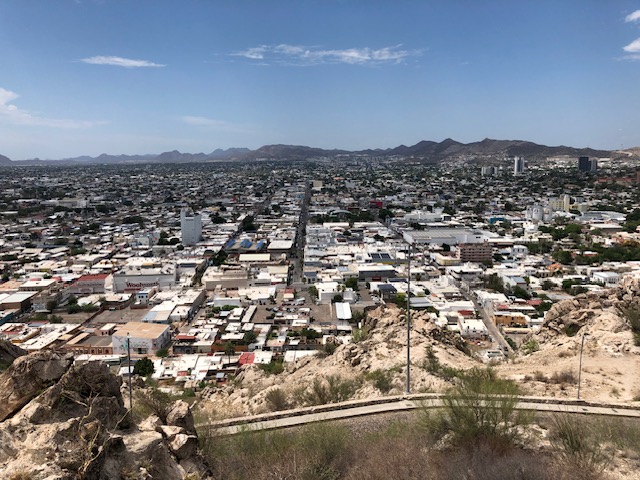
Guidebooks urge not standing out as a tourist for safety. Apparently middle aged men jogging in floral shirts are an oddity in suburban Hermosillo.
Breakfast was from a roadside stall. The verbal exchange was hilarious. After my drawled "buenos días", I got an equally mangled "good morning" back from the smiling vendor. Her customers laughed and I applauded. Trying to figure out the menu I mimed a cow; she told me "beef".
It would be fair to say that my Spanish preparation has been pretty half arsed. I took an evening course (five whole nights) back in January, "Spanish for travellers", plus occasional online + book reading while travelling. Spanish is a terrific language for the native English speaker. Many words are similar. Reading is quite easy with some context. Listening is hard. The words get run together, all at 200mph. It's also challenging for a 58yo maths/science brain that's never learned a second language.
San Carlos in the Gulf of Cortez (aka Gulf of California to northern neighbours) had been recommended by a couple in Bisbee. It has pretty coastal scenes. Kirsten, you wouldn't be able to complain at a cold swim - boy, is the water warm. Understandable with 35-36C during the day, 29C low overnight.
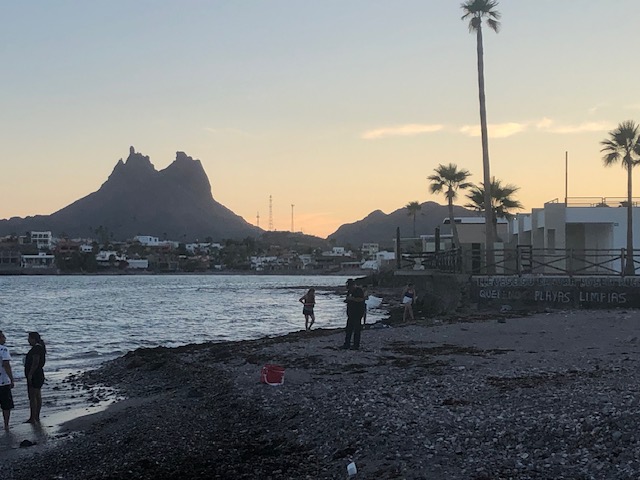
San Carlos is on its way to being a resort town. New buildings are under construction. Gated housing communities are spread along the coast.
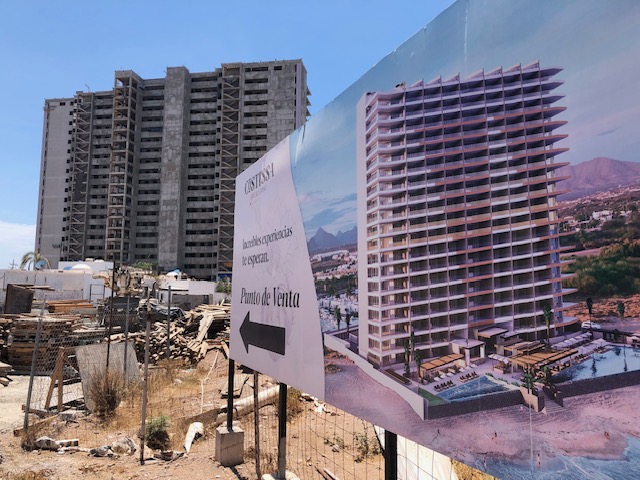
I've met many US citizens who own holiday property in Mexico, such as Red Dog, Freddie and Bear here with their hoomans Darlene and Ron. The three dogalogs from Sacramento have just bought a San Carlos house.
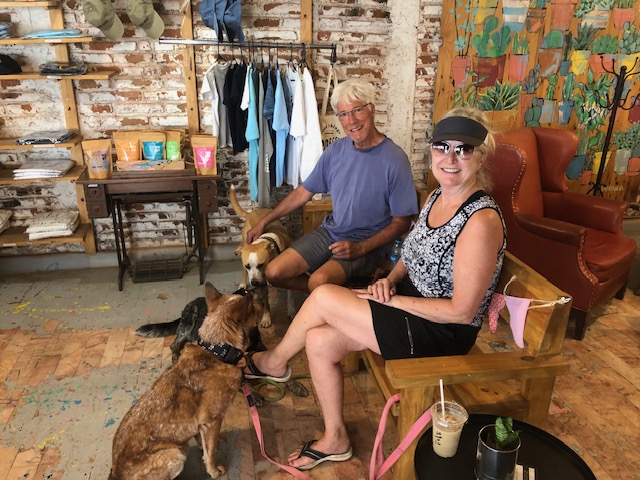
An early morning hike up Tetakawi showed the town off. It was a strenuous clamber up a loose slope, assisted by ropes. Well worth the effort.
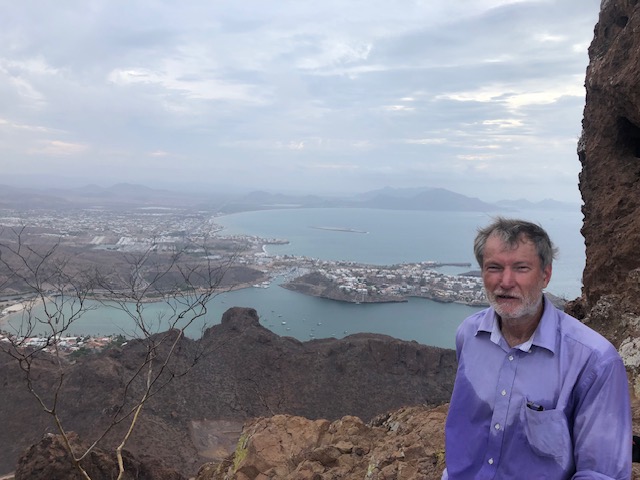
A lovely local couple at the top explained that "Tetakawi" meant "goat's teats", the shape of the peaks. Watching the voluptuous young lady miming lactation was mildly disconcerting. They're both students in the US, he studying civil engineering on a baseball scholarship, she in high school.
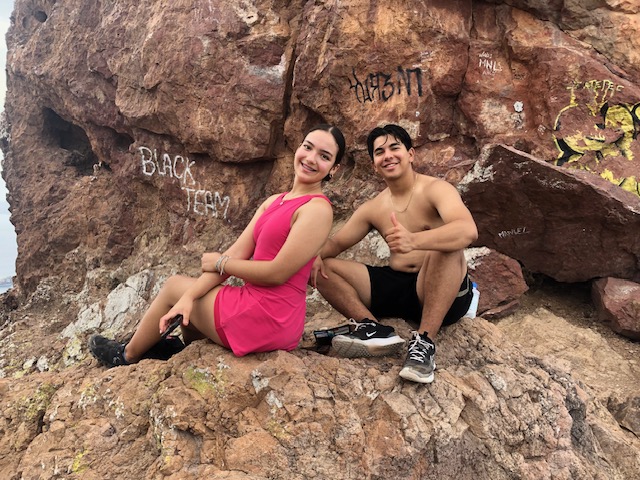
Plan A was to follow the coast until Perto Vallarta, then head inland for Guadalajara/Mexico City. Thing is, July is a stupid choice of month to visit in. Temperatures are high, humidity is high and when riding with all the gear on, energy sapping. If I stop for literally more than a minute, I disrobe to shorts and thongs, even if it's just to take a photo.
A second factor is the freeway network. Universal advice is to use the toll freeways. Yes, these are safe, fast and efficient. Unfortunately they're like the Melbourne to Geelong road: flat, straight, sucking the life out of your soul. After fifteen minutes riding, I was literally struggling to keep awake. It was scary. At least they don't have Geelong at the end.
So Plan B: head into the hills, where at least overnight temperatures are pleasant.
The last full sized town was Alamos, a historical town showing off colonial Spanish architecture.
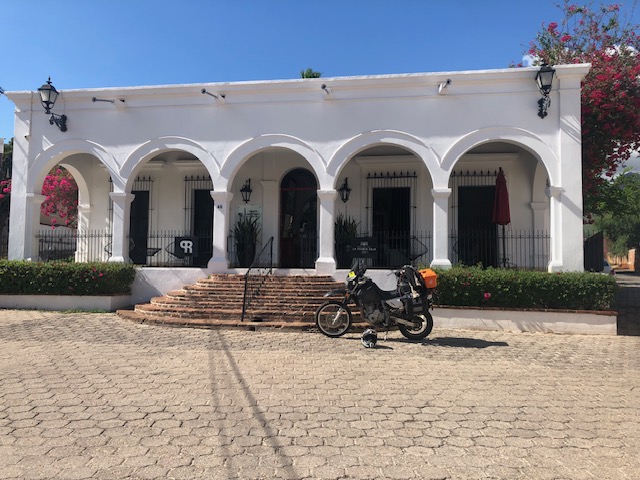
Heading to the Copper Canyon was where the adventure really started.
What Google Maps and Gaia GPS show as made roads are actually sandy tracks in the desert area of Sonora state.
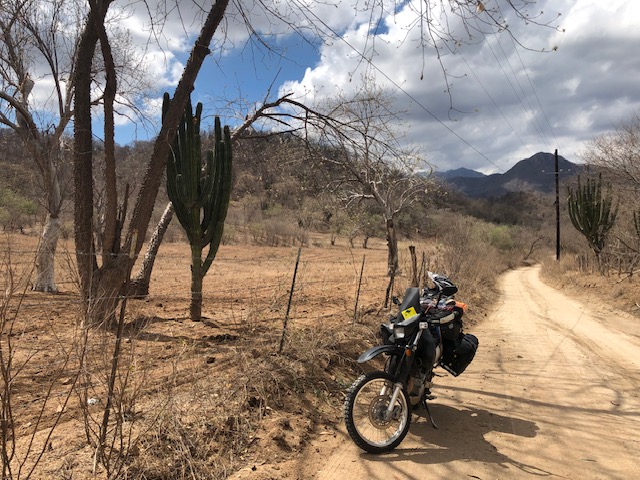
These somewhat local roads are not signposted. It took a few wrong turns before I readjusted my understanding of what the local roads look like. Through Los Tanques, turn right at Techobampo into the Sierra Madre Occidental range.
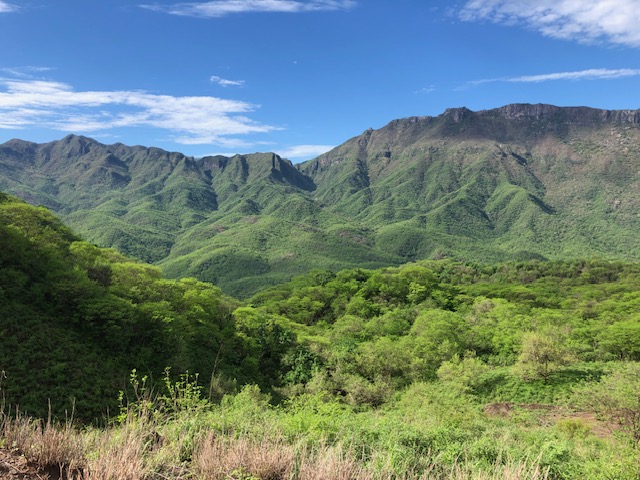
The road rose quickly up the mountain to the Chihuahua state border. At times it was well graded through forest, other times a little tough.
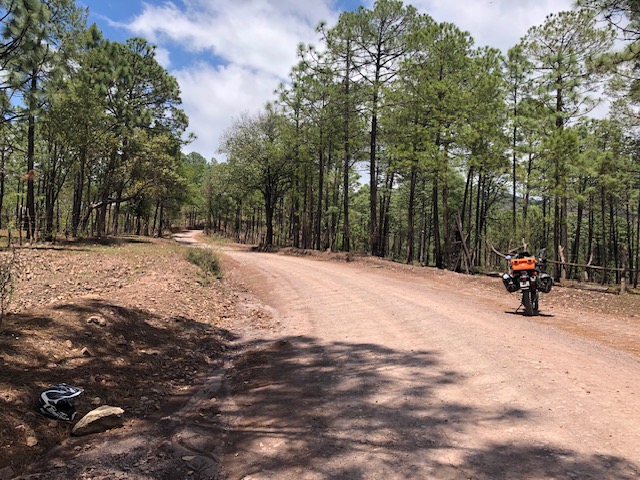
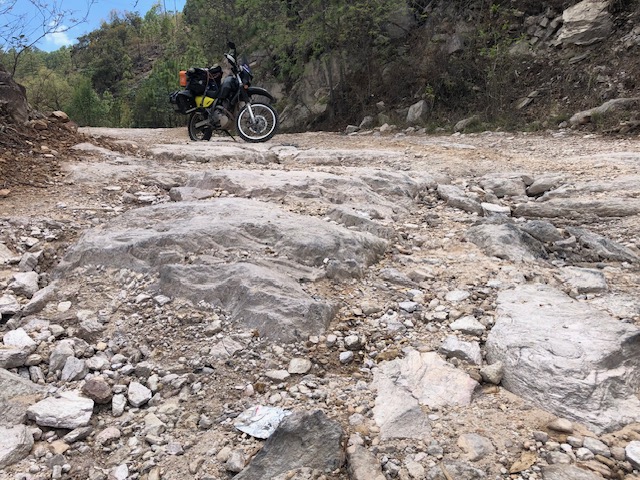
Upon reaching Chinipas, the GPS showed entry to town as a river crossing. This seemed a bit odd, so I walked into the river to check - it came up over the bottom of my shorts with a strong current.
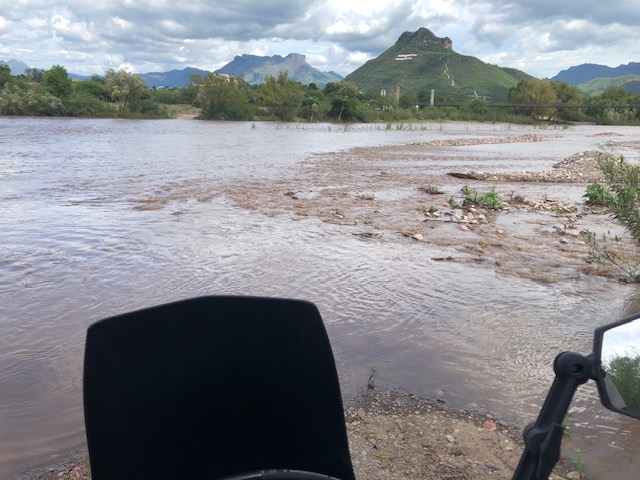
More rooting around located a concrete bridge some kms out of town. Aha!
128km on the map had taken six hours and a lot of sweat. Textile riding pants are better than leathers for breathing, but they still need movement for airflow. At slower speeds I went with shorts and an open jacket; avoiding heatstroke trumped the chance of losing some bark in a tumble. Not ATGATT, but practical.
In Chinipas mangled Spanglish and a smile lead to a hotel. There I had the pleasure of a conversation with Pablo from Sinaloa. He was in a crew building a house in Chinipas during the week, driving back to family on the weekends. It was fun exchanging language, explaining our families, past holidays and so on.
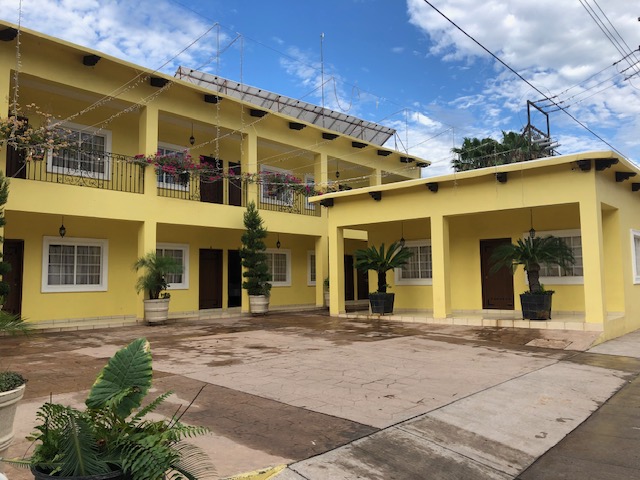
I lunched in Temoris, initially making sambos on a bench in the town square. The owner of a store I'd just patronised saw this and sent her shy daughter across. Would I like to use their table and chairs? Why gracias. Mum made a show of cleaning the old Coca Cola themed table in the corner with a big smile. Lovely.
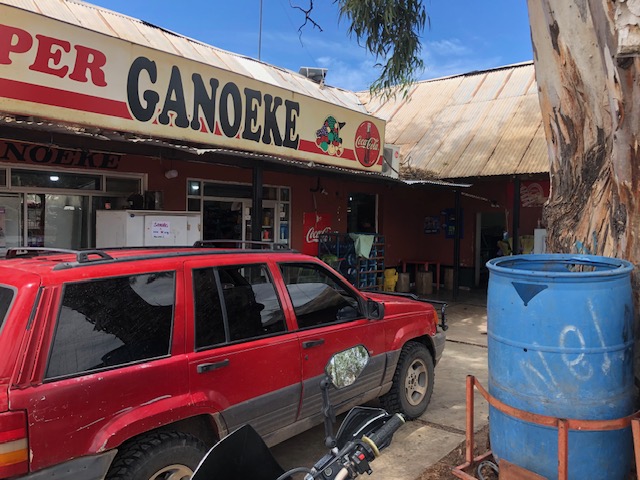
Overnight in Bahuichivo it pissed down rain, only stopping at about 9am. I'd been aiming for Urique in the Copper Canyon, but had read that it would be a mud bath on a wet road. A bit down hearted, I instead headed for Creel on a fast tar road, albeit littered with debris from the summer rains.
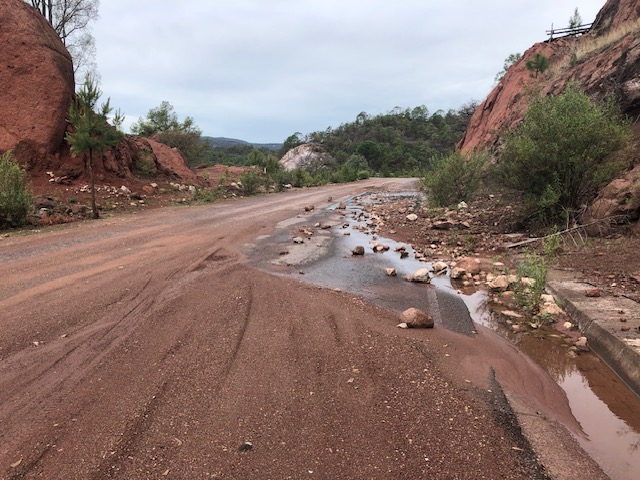
Upon entering Creel an adventure bike group was paused at the kerb. As my good mate Dave Down knows, a chance to crap on with fellow riders shouldn't be missed, especially being the first off road bikes seen in Mexico.
So this was how I met Carlos + son Andreas KLR650, another Carlos KLR650, Fred + son Luis KLR650 and Joel R1200GS. They were spending a couple of nights in Urique, did I want to tag along? Muddy road? Nah, don't worry, it'll be fine ... and it was.
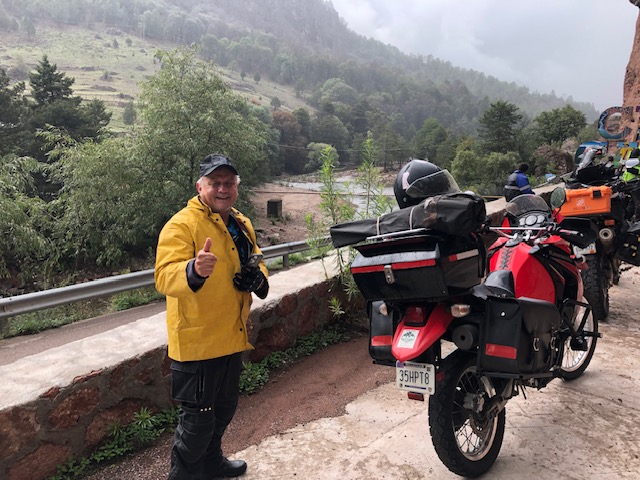
The descent into Urique is via gravel switchbacks, a little bouncing over rocks after summer storm erosion, but pretty straightforward, even in steady rain. The vista from the Mirador Cerro de Gallego lookout needed a long time to soak up, even with moody clouds.
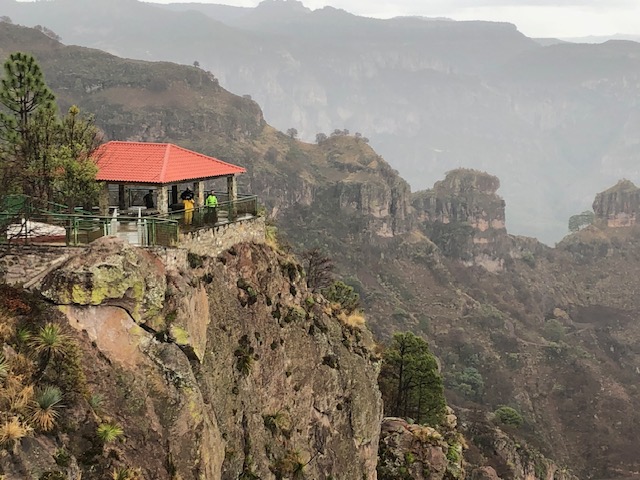
Copper Canyon is actually six large canyons together, over 65,000 square kms, about four times the area of the Grand Canyon. It is a feature of the 350km Chepe Railway from Los Michos near the coast to Creel at the north end of CC. It's also a favourite with the US and Mexican adventure riding fraternity and for good reason!
The Villa Urik hotel is a top spot to stay, the only one in CC with a pool.
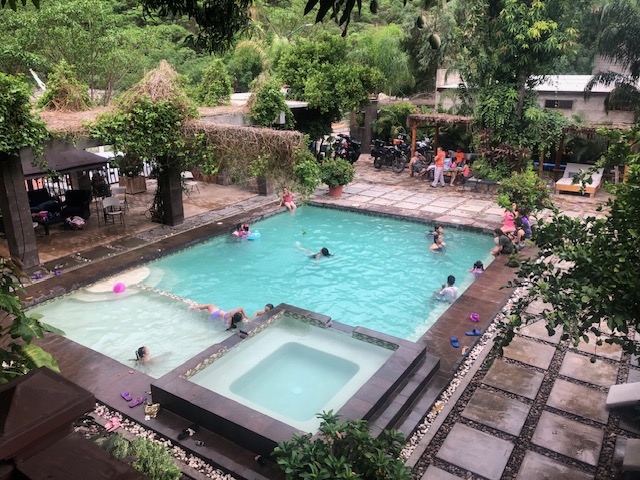
Sheez these blokes know how to have fun. The laughs didn't stop, albeit in a million miles an hour Spanish. Every now and then Carlos would translate with his Texan twang. We were each curious about each other's lives and home countries.
Then things got serious.
They'd bought a ton of meat to BBQ.
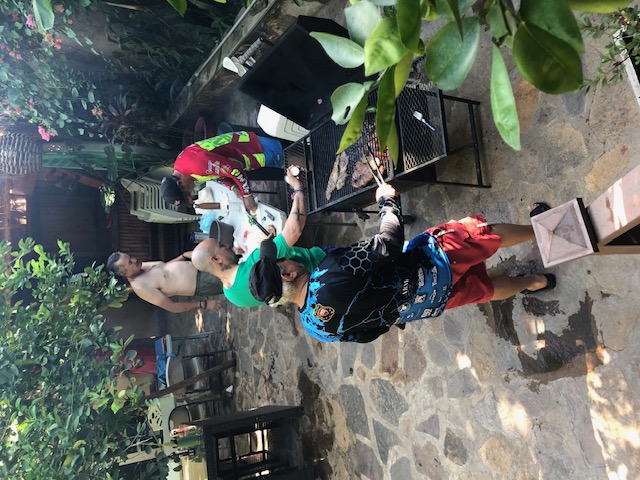
Visually Mexico is a dramatic change from the US in different ways.
There's a different approach to stuff no longer needed. It's just left in place. So derelict vehicles and buildings sit alongside those still in use.
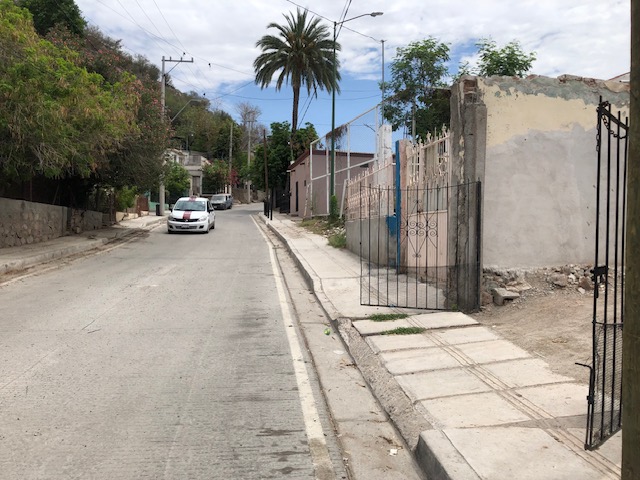
Cars are left once they're past their life. This was noticeable in the US also, though to be fair it could reflect the mostly rural places I visited. It's similar to country Australian towns where isolation means old cars stack up in the paddock, rather than be collected for scrap.
Litter is prevalent. Kirsten and Kim, you would freak out at the number of plastic bottles on the roadside, in the streets. With Victoria's new container deposit scheme, you could overtake Gina Reinhardt's wealth.
On the other hand, towns can be neat and vibrantly painted.
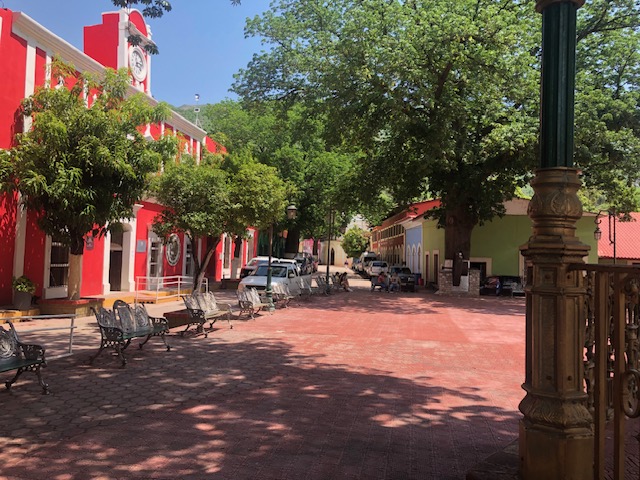
I'm feeling a long way from home this week, wishing I was back there to help out with a couple of events. Firstly, my best mate was in a big car crash.
Secondly, Sammy passed away. She was Kim's (now "Remy" to the outside world) seventh birthday puppy. Kim is now twenty three. I'll miss that black farting machine.
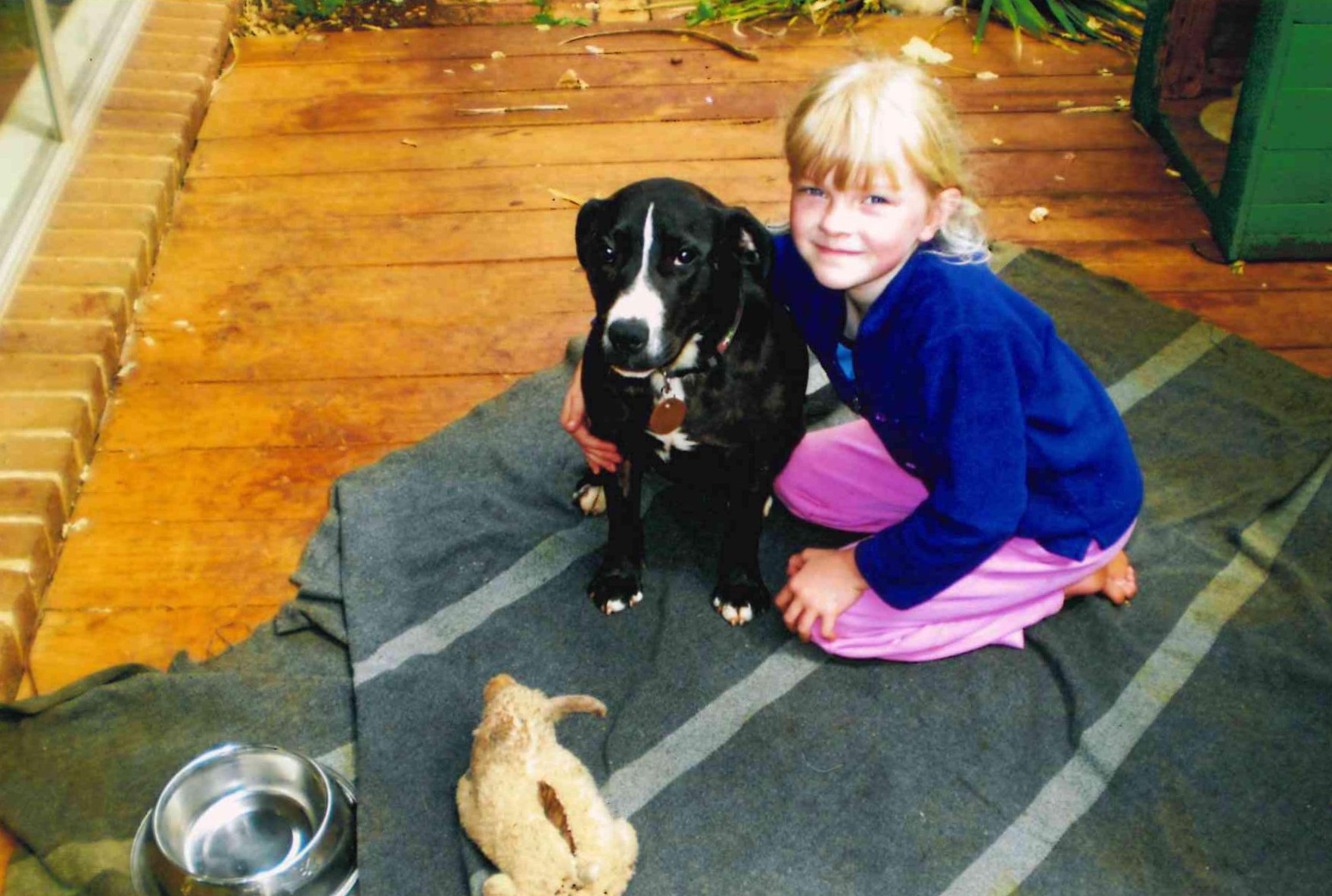
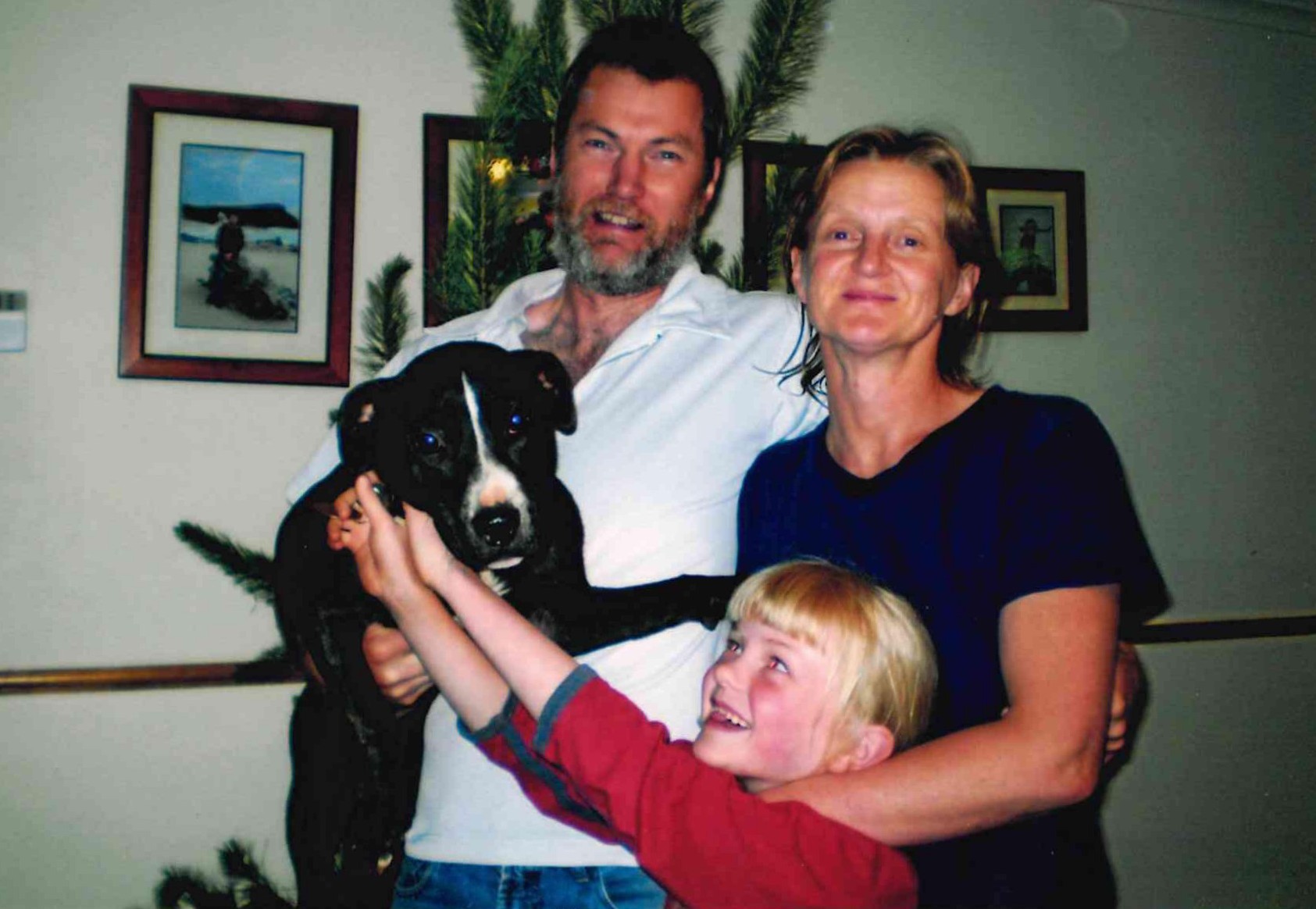
Ok, time to shut up.
I'm tapping from Batopilas. The ride here from Urique was amazing. Most challenging yet. To give you an idea, check these videos out (not mine):
The first shows conditions on the ground well
The second has cool drone footage showing the terrain
I'll bang on about it next time. I need to find some fuel and the town doesn't have a servo.

